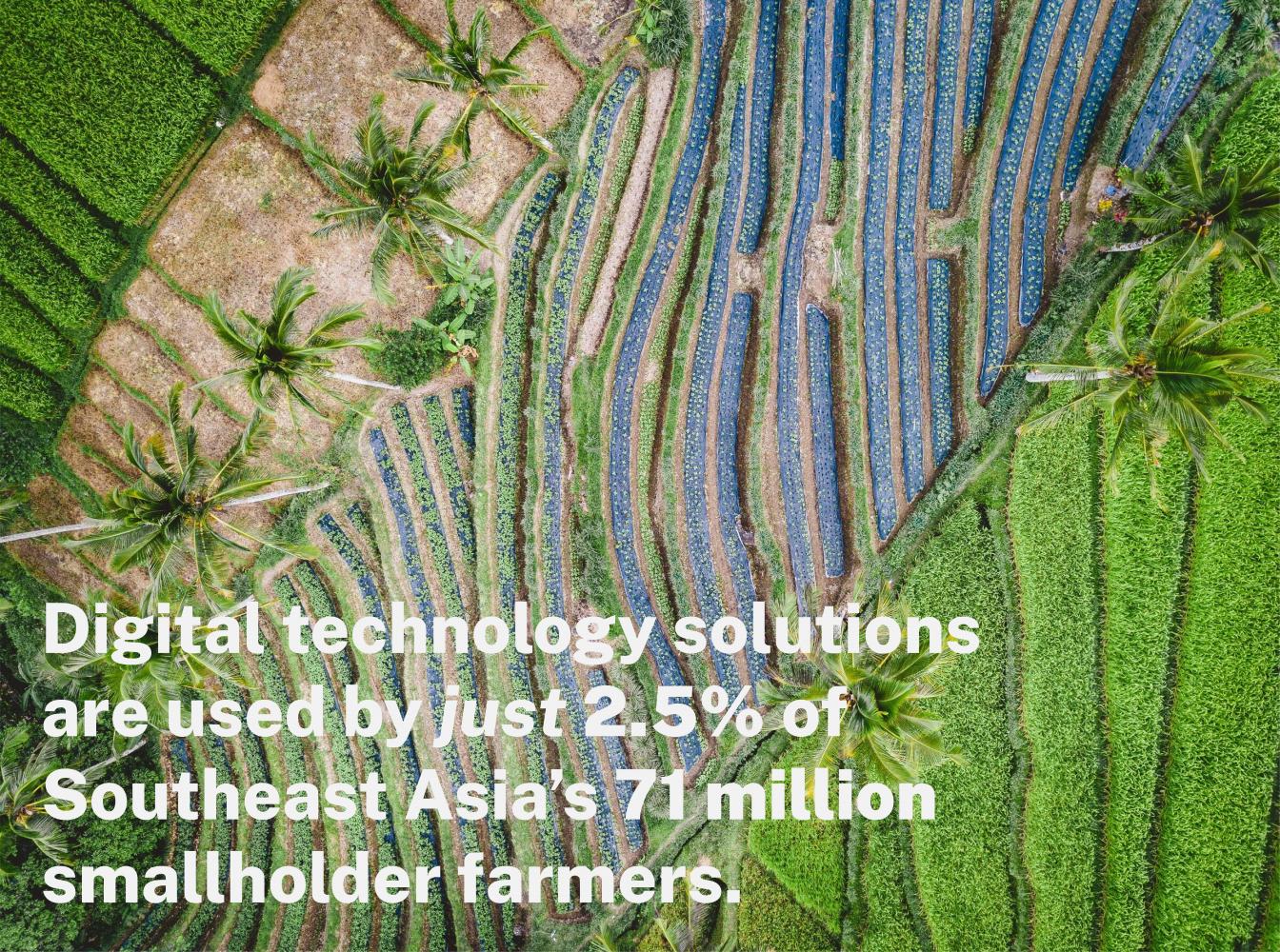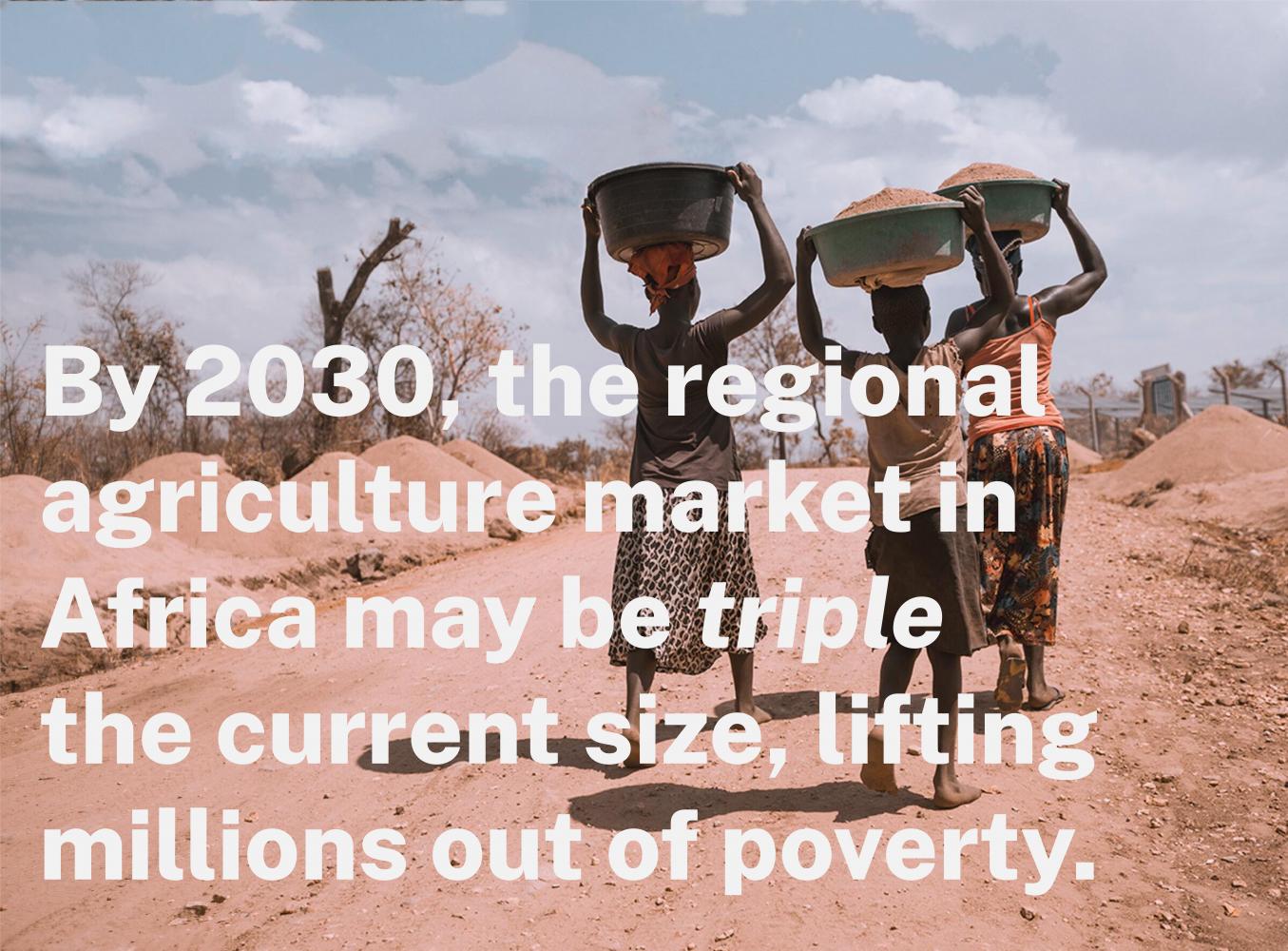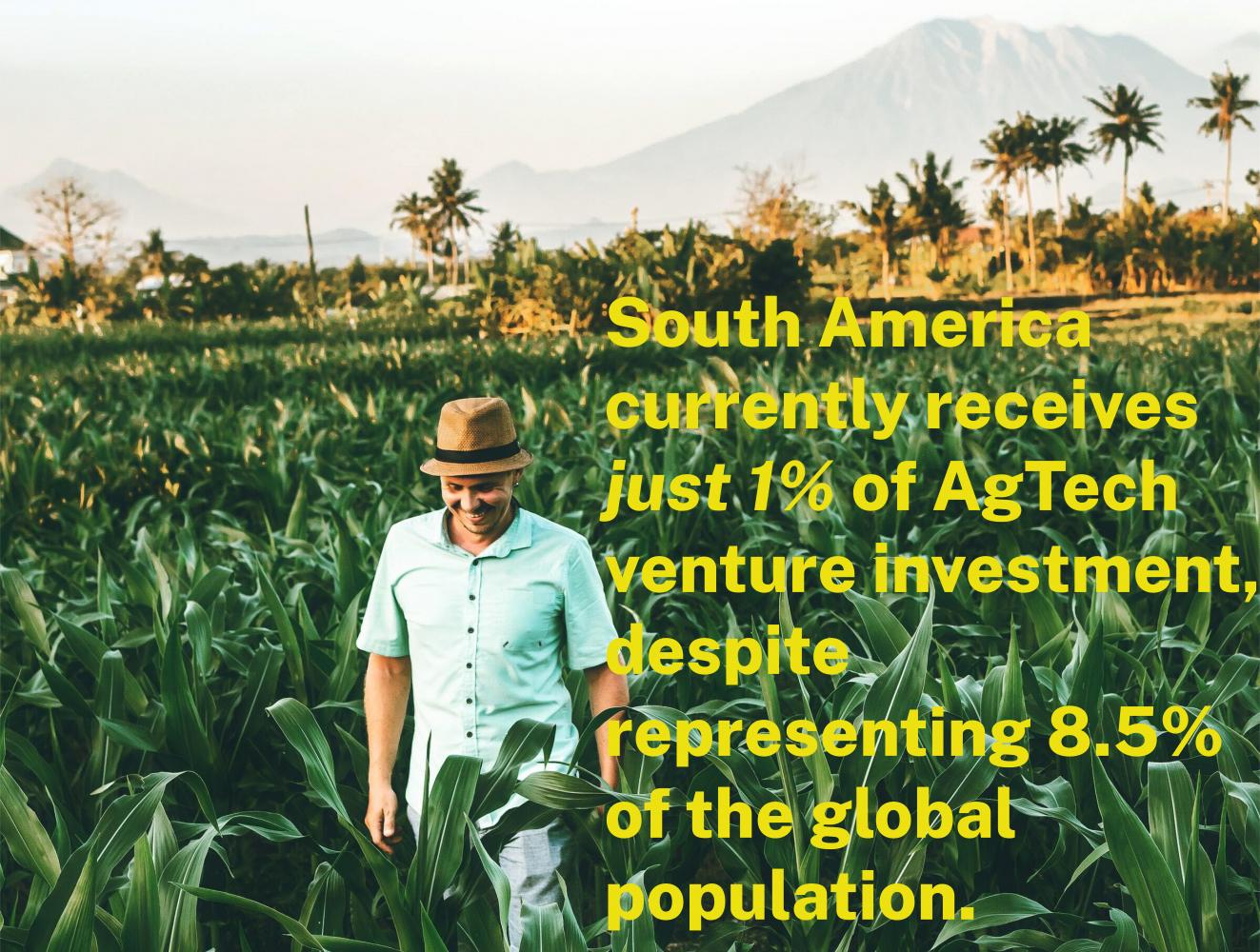Growing the Future Part 2: Global Challenges, Regional Opportunities
This is part 2 of a 2-part series. Read part 1 here.
There are numerous, cascading challenges that are affecting agriculture globally, with unique manifestations at the local and regional level. We can summarize these challenges succinctly as one, interrelated “triple challenge”-feeding a growing population, providing a livelihood for farmers, and protecting the environment –which must be tackled together if we are to make sustainable progress on any of them. This is even more difficult than it might seem at first glance, as initiatives in one domain can have unintended consequences in another. For instance, efforts to increase food production in the short term might have the immediate benefit of solving food disparities, but may impact long term regional environmental health, limiting future progress. The most effective advances in agricultural technology will find ways of simultaneously addressing the triple challenge.
To do this most effectively, we should elevate solutions that are values-driven, and speak to the needs of localized populations, finding the best use for technology when it meets real human needs. We must address global challenges through regional opportunities.
 South Asia
South Asia
Agriculture accounts for a significant part of GDP throughout the region, and has grown at a remarkable overall rate during the past 30 years as a consequence of the Green Revolution. Nevertheless, the region has a greater number of undernourished and poor than any other developing region. New agricultural technology adaptation is particularly fundamental to South Asian agriculture for a multiplicity of reasons; agriculture is a primary source of livelihood, and it is largely rain-fed, which makes it vulnerable to extreme climate change. This is coupled with an increased population and high economic growth which has further exacerbated the adverse impacts of climate change due to increased demand for land and water from other sectors of the economy.
There are, however, a few key opportunities for technological development:
Improved water resource management: Improved water management is essential to support the intensification and diversification of production and to reduce resource depletion; efficient technologies can play a key part in actualizing this goal.
Integrated agro-meteorological advisory services: re-oriented agricultural services that allow for new forms of agricultural research, education, information and extension systems; agtech can potentially provide models for internet-based and data-driven delivery of market and technical information to small farmers.
Improved rural infrastructure: Returns to transport and health investments are high and beneficial to the poor, especially in low potential and highland areas in the region. Agtech advances can aid in making improvements to infrastructure cheaper and more developmentally focused
Advances in biotechnology, with focus on soil degradation in intensively cultivated systems, continuing germplasm improvement in food crops and effective biological nitrogen fixation (BNF) with breakthroughs and updates in fertilizer usage practices.
The pathway to technology adoption is steep; Grow Asia, a partnership platform established by the World Economic Forum and the Association of Southeast Asian Nations Secretariat, found that its 60 proposed digital technology solutions are used by just 2.5 percent of Southeast Asia’s 71 million smallholder farmers. The biggest hurdle ultimately is affordability; in order for these technologies to be successful and actually implemented, we must address issues of accessibility and equity.
Africa
 AgTech is poised to make incredible advances in Africa; while there are numerous challenges, there is also extraordinary opportunity. With an abundance of labor, land and untapped water, the resources necessary for a massive expansion of agricultural production are already in place. Of the world's surface area suitable for sustainable production expansion—that is, nonprotected, nonforested land, with low population density—Africa has the largest share by far, accounting for roughly 45% of the global total.
AgTech is poised to make incredible advances in Africa; while there are numerous challenges, there is also extraordinary opportunity. With an abundance of labor, land and untapped water, the resources necessary for a massive expansion of agricultural production are already in place. Of the world's surface area suitable for sustainable production expansion—that is, nonprotected, nonforested land, with low population density—Africa has the largest share by far, accounting for roughly 45% of the global total.
There are other serious threats to the agricultural growth rate despite this; among them are the widening technology divide, slow development of input and output markets and inadequate safety nets to deal with extreme poverty and risks and fluctuations, particularly due to climate change. Some of these challenges can be met by responsibly developing Africa’s huge natural potential.
There is enormous opportunity in the urban food markets that are booming in Africa, creating a potential trillion-dollar regional market for African producers by 2030, more than triple its current size. Additionally, technological innovations have been lowering costs associated with implementing needed reforms, which can help protect vulnerable populations from exploitation while creating more liquid land markets. Many countries have undertaken exciting technological pilots which can now be scaled up, already pointing to the important role AgTech will play in Africa's own green revolution.
South America
South America globally represents 13 percent of agricultural trade; agriculture uses over one-third of the region’s land area, consumes nearly three-quarters of the region’s freshwater resources, and generates almost one-half of the region’s greenhouse gas emissions. While South America is particularly rich in terms of its agrobiodiversity endowments, the rise of monoculture cultivation threatens that diversity; expansion of the agricultural frontier remains the main driver of deforestation in the region. Looming large in the background is the additional threat of climate change.
Out of these challenges, agtech might find an incredible opportunity for sustainable, meaningful gains.
However, South America currently receives just 1% of AgTech venture investment, despite representing 8.5% of the global population.
This region is being overlooked because of a lack of understanding of the region’s nuances by investors, and the fact that not all technologies are a good fit; as labor continues to be very accessible and affordable, it makes technology substitution and adoption harder, and verticals like farm automation or vertical farming unviable. Nevertheless, there are plenty of other AgTech subsectors that have the potential to take off. The market opportunity for the region in smart agriculture would potentially be close to $2 billion, with opportunities in precision agriculture in the incorporation of data and information through drones or sensors into management system tools, risk management and climate indicators, and new fertilizer infrastructure development. There are opportunities in biotechnology as well, like local seed adaptation, development of accessible and affordable biological and organic fertilizers for rural communities and opportunities to reduce food waste and systemic inefficiencies.
Growing the Future: GIST Innovators and AgTech
GIST innovators are playing a key role in fostering new advancements in Africa. Ghanaian startup Sesi Technologies, whose founder Isaac Sesi participated and was awarded in GIST Tech-I competition, is playing an important role in empowering African farmers with affordable technologies. For smallholder grain farmers, they bundle proven post-harvest management technologies and other value-added services and make them available to farmers in a way they can afford, helping farmers access premium markets and earn more from their harvest so they can break the cycle of poverty.
They also work with African agribusiness, providing effective hardware and software technologies that help them measure grain quality, reduce post-harvest losses and increase productivity.

Another African innovator is entrepreneur and Nigerian founder Taita Ngetich, whose work with Illuminum is connecting African farmers with next generation greenhouse technologies, as well as soil testing and drip irrigation kits.
At the forefront of innovative solutions in South America is Heriberto Solano, founder of Columbian startup BlackSquare, who also competed in Tech-I; BlackSquare is working to connect the South American agricultural sector with the latest in drone-driven sensor technology, providing photogrammetry, thermal detection, LIDAR, and hyperspectral analysis, helping farmers quantify valuable data metrics into their decision making.
Through competitions, accelerators, and mentorship, GIST has helped to foster a new generation of AgTech Innovators who are leveraging technology to meet challenges all over the world, pursuing cutting edge innovations at the forefront of agriculture technology; from Bosnian computer scientists revolutionizing the world of beekeeping to innovators revolutionizing emerging economies globally, GIST is proud to support the next wave of young innovators in this exciting field.


